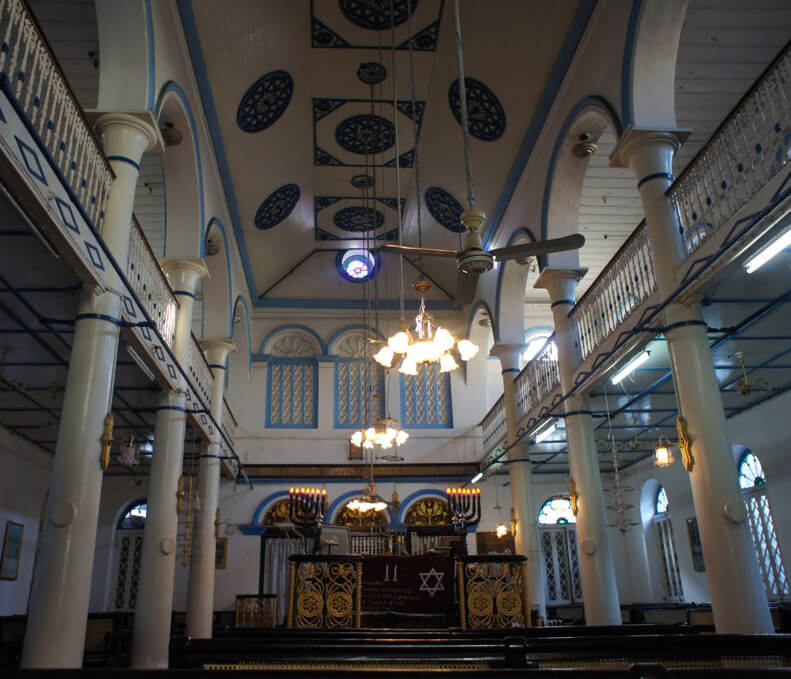Today’s Jewish Treat presents the unexpected Jewish history of Myanmar (formerly Burma), which gained its independence from the United Kingdom on January 4, 1948. A synagogue is among the 188 Heritage Buildings in Yangon City (formerly Rangoon).
Although there was no Jewish settlement in Burma until the 19th century, it is recorded that a Solomon Gabirol was the commissar of the army of King Alaungpaya. However, real Jewish immigration only began after the British took control of the region. In the 1800s, Jewish merchants came from India and settled in Rangoon and several smaller cities. Many of them were involved in the teakwood trade. The Burmese Jewish community came to be comprised of Baghdadi Jews, Cochin Jews and Bene Israel, three distinct communities of the Indian subcontinent. (There is also a small Bnei Menashe community in the north.) The Jews were accepted well-enough by the general community that there were at least two Jewish mayors in the country during the 20th century.
The Musmeah Yeshua Synagogue in what is now downtown Yangon, started out as a simple wooden structure built in 1854. In 1893, construction began at the same location (a plot of land granted by the British Colonial Government) for a stone edifice. The new building was completed in 1896. It is said that there was a second synagogue built in 1932, when the Jewish population peaked at close to 2,500 people, but no record of it remains.
When the Japanese invaded Burma in 1942, they did not persecute Jews like their German allies, but they were suspicious of them as European sympathizers. As a result, the majority of Jews left Burma. After the war there were still approximately 300 Jews, but half of them fled the 1962 military coup that transformed Burma into Myanmar and greatly limited personal freedom.
Today, the Jewish community consists of only about 20 people, bolstered by the diplomatic staff from the Israeli consulate and occasional Jewish tourists. The synagogue remains a popular tourist stop.

Copyright © 2018 NJOP. All rights reserved.
Bibliography
 Print This Page
Print This Page